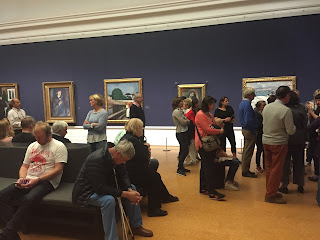In praise of Catherine Slessor
Catherine Slessor writes (beautifully) for Architectural Review. Here's a snippet from a review she wrote that appears in the current issue (no. 1353, 11/09, page 57):
An hour and a half by train to the southeast of Paris, Troyes is a former textile-making town, now stoically enduring the collapse of its industrial base. Prosperity as a trading center during the Middle Ages (the town gave its name to the troy system of weights still used for precious metals) accounts for a conspicuous legacy of half-timbered houses. Within a tight maze of streets, the narrow colombage structures sway and collide like a crowd of elegantly dissipated drunks, heightening the sense of period drama. // Shaped like a champagne cork, the medieval core swells out and around the 13th-century Saint Pierre-et-Saint Paul Cathedral. On its tumescent east, the core is bounded by the Seine, linking Troyes with Paris. Nudging towards the edge of the cork where the urban texture is looser and less homogenous, Lipsky+Rollet’s site lies in the lee of the cathedral, next to the bishop’s house (now converted to an art museum). Yet despite this proximity to the town center, the site was curiously isolated and plain.
A lot of reviewers would give you that last phrase - and let it go at that. Look how much "back story" is packed into these two paragraphs (and with such evocative phrasing)!
An hour and a half by train to the southeast of Paris, Troyes is a former textile-making town, now stoically enduring the collapse of its industrial base. Prosperity as a trading center during the Middle Ages (the town gave its name to the troy system of weights still used for precious metals) accounts for a conspicuous legacy of half-timbered houses. Within a tight maze of streets, the narrow colombage structures sway and collide like a crowd of elegantly dissipated drunks, heightening the sense of period drama. // Shaped like a champagne cork, the medieval core swells out and around the 13th-century Saint Pierre-et-Saint Paul Cathedral. On its tumescent east, the core is bounded by the Seine, linking Troyes with Paris. Nudging towards the edge of the cork where the urban texture is looser and less homogenous, Lipsky+Rollet’s site lies in the lee of the cathedral, next to the bishop’s house (now converted to an art museum). Yet despite this proximity to the town center, the site was curiously isolated and plain.
A lot of reviewers would give you that last phrase - and let it go at that. Look how much "back story" is packed into these two paragraphs (and with such evocative phrasing)!


Comments
Post a Comment